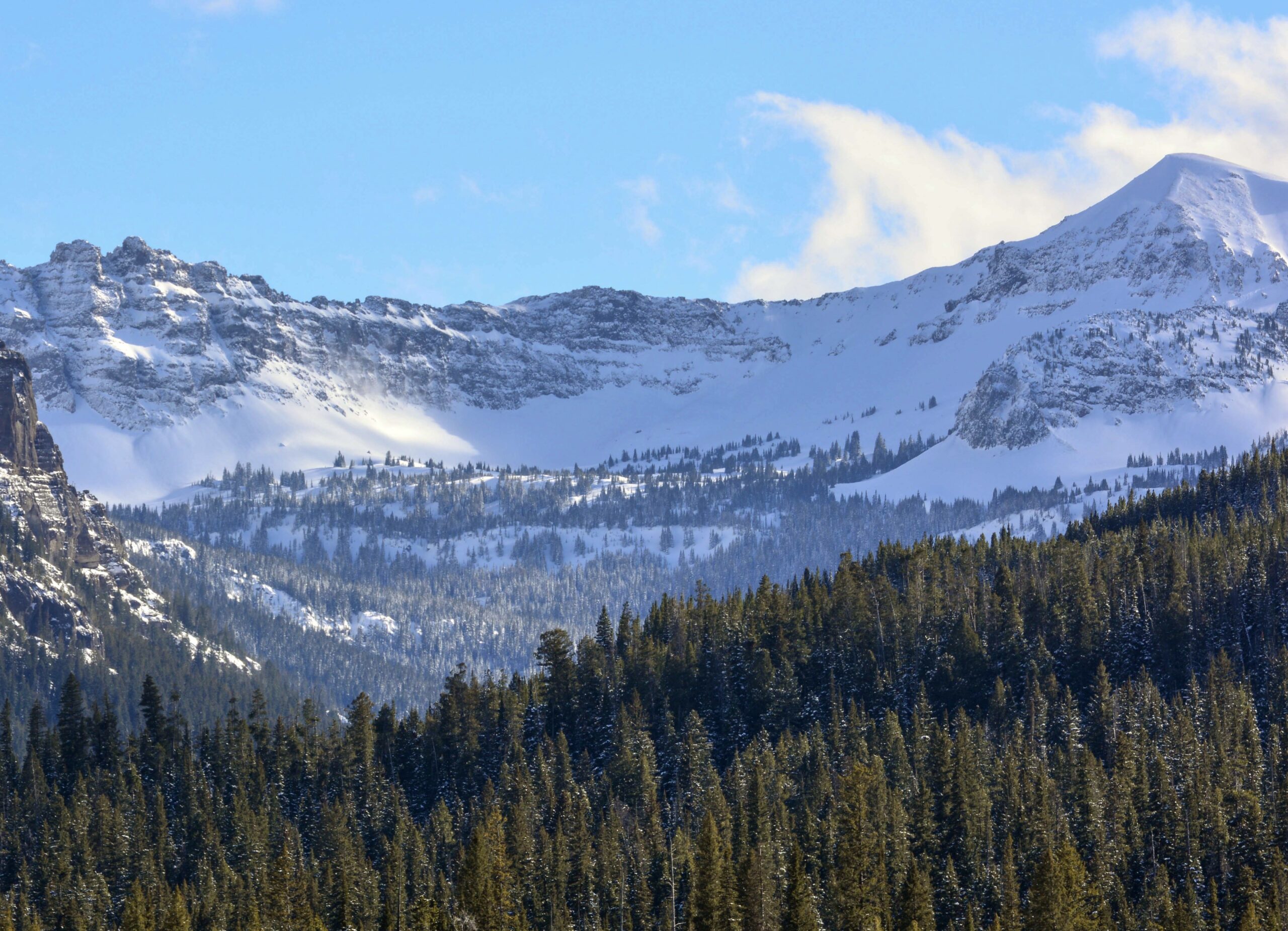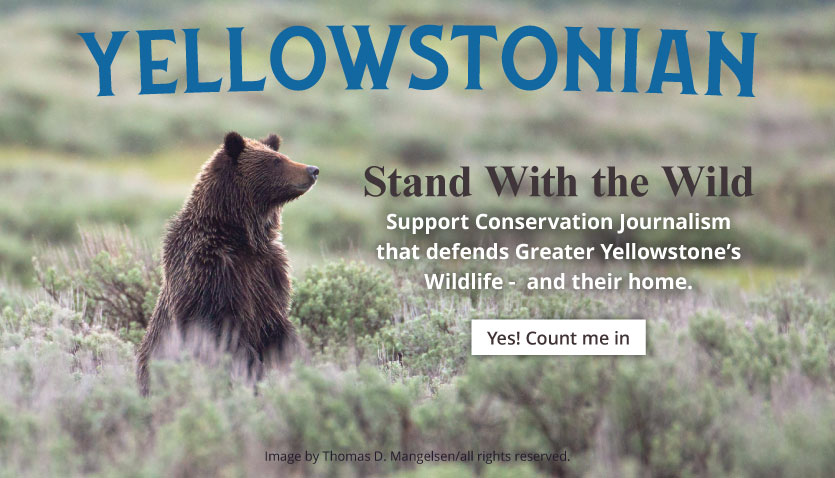EDITOR’S NOTE: Yellowstonian welcomes guest essays from citizens who have opinions and interest in the future Greater Yellowstone, as long as they are fact-based, respectful and, of course, well-written. The same holds for readers who wish to respond. Responses must be on point. The essay below is from Clint Nagel, who has been a vocal advocate for protecting wildlife in the Gallatin Mountains located in the northwest quadrant of the Greater Yellowstone Ecosystem. He participated in an early exercise in consensus and collaboration that failed to arrive at recommendations for how to best protect the Gallatins and its world-class wildlife—a full diversity of which is found nowhere outside of the Northern Rockies in the Lower 48.
By Clint Nagel
A decade and a few years ago, myself and many like me became involved in a consensus and collaboration exercise known as the Gallatin Community Collaborative. It was a loosely fitted group of individuals and organizations coming together to discuss future management of public lands in the Gallatin Range, a jumble of mountains in southwest Montana extending northward from Yellowstone National Park.
The intent was to seek common ground by addressing, head-on, many conflicts over public land usage in the Custer-Gallatin National Forest, the federal land management agency overseeing that part of the Gallatin Mountains found outside of Yellowstone.
Even though the national forest represents a different government jurisdiction from Yellowstone, the Gallatins are a functioning geographic/topographic home and an unbroken pathway for wildlife moving in and out of the park. The mountains are like a healthy biological appendage.
The primary focus of citizen meetings was discussing the prickly issue of wilderness. While many assumed that previous actions by Congress had given the Gallatins de-facto wilderness protection, several recreation groups wanted to reopen that status to gain access to sensitive areas they otherwise might have been prohibited from using.
The central concern to several of us was what would the consequences of reduced protection be, now and in the future, especially as human recreation pressures on public land mount? If one wants a glimpse of the future, all you have to do is look today at soaring recreation levels on the west side of the Gallatins around Big Sky or at the north end of the Gallatins near Bozeman.

We pressed other participants to ponder the future and consider not just what users want but what science tells us about the impacts of outdoor recreation on wildlife, things which seemed like practical information the public would want to know. But our concerns were never fully or adequately answered, neither from recreationists nor from the Forest Service.
In 1977, Congress passed Senate Bill S.393 establishing the Hyalite Porcupine Buffalo-Horn Wilderness Study Area (HPBH WSA) as a precursor to potential full wilderness designation. The 155,000 acres included in the WSA was the result of compromise, of paring down a larger volume of roadless lands with high ecological value that could have qualified for wilderness, and which today are even more important for Greater Yellowstone’s famous wildlife.
Now versus then, the beleaguered grizzly bear population in the ecosystem has rebounded but it faces many times the amount of human pressures that existed then. Big Sky was then in its infancy, and it has become a symbol of incompatibility with its immediate and nearby natural surroundings, displacing wildlife such as elk, grizzly bears, moose, wolverine and bighorn sheep from their seasonal range. The Hyalite area of the northern Gallatins is one of the most heavily used portions of Forest Service lands in the Northern Rockies.
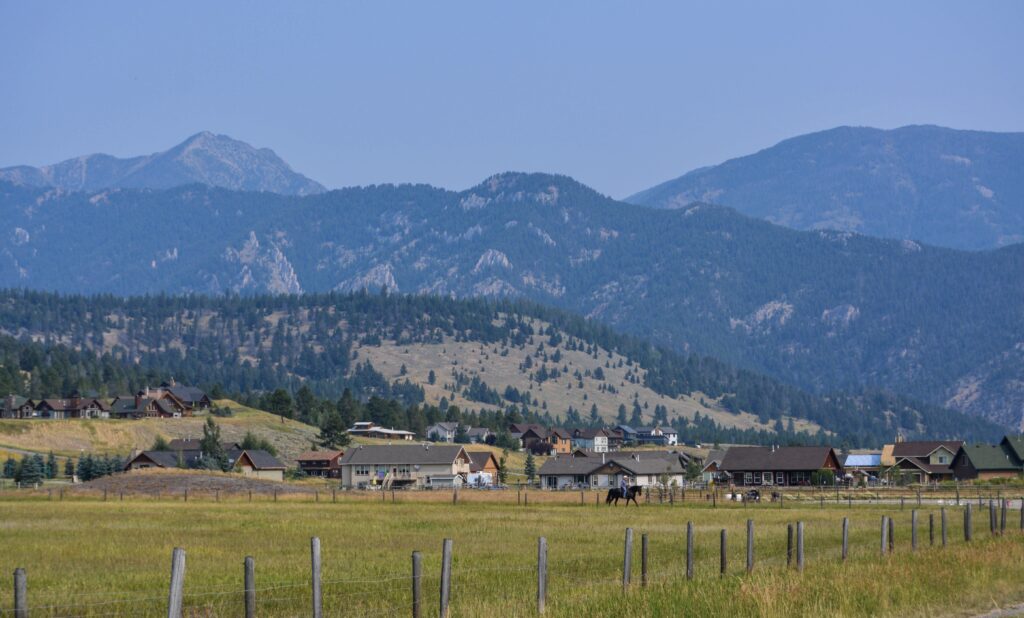
Since 1977, wild country has not grown, but the number of people and variety of human uses on land surrounding the Gallatins has.
What started with good intentions during the origins of the Gallatin Community Collaborative quickly turned on itself as human wants came to dominate. Some recreationists, representing uses that didn’t really exist at industrial strength levels almost 50 years ago, acted like the Gallatins in this new Millennium was terrain ready for the taking and they needed to get theirs.
Since 1977, wild country has not grown, but the number of people and variety of human uses on land surrounding the Gallatins has. What started with good intentions during the origins of the Gallatin Community Collaborative quickly turned on itself as human wants came to dominate.
Many wildlife conservationists who attended those meetings in good faith felt as if their voices were silenced or their presence made unwelcome. And then, the collaborative fell apart. Many place the value of consensus and collaboration on how many meetings are held as part of the process, but what good is holding lots of meetings if they don’t result in greater empathy for the interests—wildlife—that is being told to give up the most?
Rising from those ashes of the Gallatin Community Collaborative came a new effort called “the Gallatin Forest Partnership” (Partnership) and it, too, left many wildlife advocates feeling alienated. The Forest Service figured that it could avoid controversy by encouraging the Partnership to be its proxy by coming up with recommendations and thereby deflecting from the valid public criticism that, for a few generations, Custer Gallatin managers have been accused of being anti-wilderness.
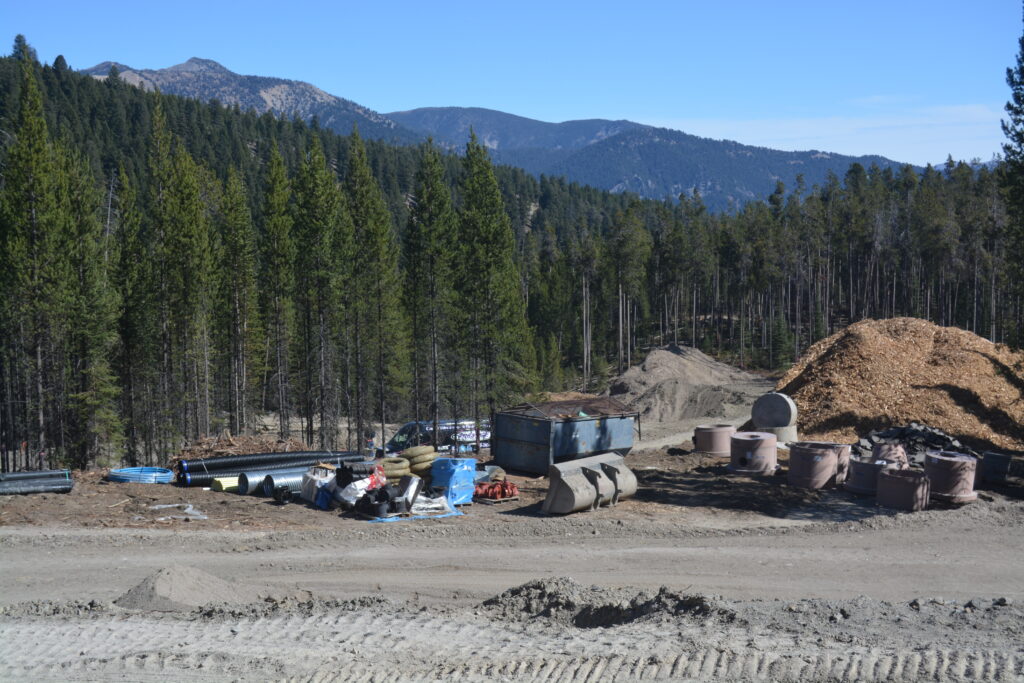
A complaint I had about the Gallatin Community Collaborative, and which continues with the Partnership, was/is the obvious lack of appreciation from recreationists for the intrinsic value of Greater Yellowstone. In their promotion of use and accommodation, seldom did/do they reference wildlife or science because they knew that if they did, they would have to acknowledge the undeniable impacts of outdoor recreation. We’re not talking about trail condition, but volume and intensity of humans that displace wildlife.
Being one of the largest nearly intact temperate-zone ecosystems on Earth didn’t seem to register for many at the meetings I attended who prioritized their personal desire for play over that of reflecting on their level of disturbance and why wildlife need secure habitat.
I made the comment that some of the consensus and collaboration sessions reminded me of a rich dysfunctional family squawking over the last remaining scraps of a family member’s estate. It was sad and maladjusted, resulting in the abandonment of our first effort at consensus and collaboration, ironically, over the inability to reach consensus.
Citizens motivated by a strong desire to protect the ecological integrity of the Gallatins, including wildlife and the habitat different species need, were circumvented in that effort leaving leaders of the Gallatin Forest Partnership to formulate and recommend their own legislation. I am hardly alone in this sentiment and criticism for it includes many, many respected conservation advocates who held the Forest Service accountable on behalf of wildlife. This includes former Forest Service personnel.
Citizens motivated by a strong desire to protect the ecological integrity of the Gallatins, including wildlife and their habitat, were circumvented out of that effort leaving the Gallatin Forest Partnership to formulate and recommend their own legislation. I am hardly alone in this sentiment and criticism for it includes many, many respected conservation advocates.
Some conservation organizations today seem more like PR wings of the outdoor recreation industry. Look at who they are aligned with. Those who were willing to fight to advance their own recreational self-interest or make money off of recreation were rewarded with more inclusion by assuming control over Gallatin Forest Partnership discussions.
Those leaders chose to form allegiances with recreationists over wildlife advocates. It was also clear they wanted to curry favor with the Forest Service which, for many years, became known for favoring multiple use activities over wildlife protection. The agency earlier had to be sued by wildlife conservationists to force it to uphold the letter of the law pertaining to wilderness study areas.
The Gallatin Forest Partnership, by discounting the advocacy of pro-wildlife advocates, essentially removed wildlife from being given a prominent and respected seat at the table of consensus and collaboration when, in fact, wildlife will be the most effected forever by the Partnership’s decisions. Basically, the Partnership demonstrated a willingness to negotiate away the protection of finite wildlife habitat in favor of appeasing recreationists who one can objectively say already have an abundance of places to play in Greater Yellowstone and public lands around the West.
Places where wildlife can still gain refuge from intensifying human activity are shrinking. We wildlife conservationists are not in it for ourselves. We do not benefit financially or personally, other than knowing wildlife will be there. We are trying to give a voice to species that need our help. We believe that keeping them on the landscape is a gift we can pass along to future generations. Ask yourself this commonsense question: why have you not in recent years heard any members of the Gallatin Forest Partnership call out the intensity of development at Big Sky and voice concerns about its impacts on wildlife and public lands?
Places where wildlife can still gain refuge from intensifying human activity are shrinking. We wildlife conservationists are not in it for ourselves. We do not benefit financially or personally, other than knowing wildlife will be there. We are trying to give a voice to species that need our help.
There was a time when the environmental community in the Northern Rockies would passionately coalesce around issues such as wilderness, wildlife, and the need to preserve our natural world. Sadly, that is not the case today. To some, it’s only about use. Some organizations which previously championed wildlife have shifted to become advocates for recreation. Many members of those organizations identify more as recreationists than as defenders of wildlife.
Too many times we are now seeing once reputable environmental organizations become eager to collaborate with agendas antithetical to those deep-rooted interests of protection. You need not have to guess what happens when they do. Valued interests, such as wildlife, are not treated as mutually inclusive, and the so-called collaboration becomes a game of exclusion. Often, wildlife loses out to human desires. In the case of the Gallatin Forest Partnership, the result is a big minus for wilderness, and it ignores the growing body science documenting wildlife disturbance caused by human activity.
Once again, wildlife is being forced to get by with less to accommodate recreationists. They cannot legitimately call themselves conservationists. Many who once held long-term leadership positions in preservation of wilderness and wildlife have either walked away or watered down their long-term commitment to the landscape. Why? Such is the example of some of those who testified before Congress. They did so years ago proclaiming the need to vigorously protect the wilderness study area in the Gallatins.

Some of those, (not all) who once fought the good fight are today affiliated with the Gallatin Forest Partnership and instead of prioritizing wildlife, they now are advocates for thrillseekers. What happened?
The Partnership has tried to tout its alleged success with consensus and collaboration in front of various county commissioners, businesses, and the recreational community, proclaiming what they are doing will be a great victory for wilderness. But it is a ruse. What they are doing is opening the door for intensifying recreational access and the ruination of prime wildlife habitat. They claim to have science backing them up, but where is it?
Throughout recent history, this has been a growing problem. So many different entities, self and special interest groups, have fought like cats and dogs over how to utilize the forests and landscapes along the northern regions of Yellowstone National Park. They did so for their short-term interests, not for the interests of wildlife that inhabit the region.
The problem is so many of these groups have given wildlife little thought, or if they did, they have rationalized the threats away. There seems to be a mentality that the Gallatin Range is ours as Americans and Montanans to consume beyond our wildest dreams. But we will not get another chance at protection if this Gallatin Forest Partnership proposal comes to fruition. It must not come to that.
Their proposal does little for wildlife that exists outside the wilderness study area. In fact their proposal does just the opposite, by whittling down the existing 155,000 acres set aside by the 1977 legislation. Their proposal also seems to ignore the fact that the recreational activities they favor are certain to grow, and that will harm additional secure habitat. All one must do is look at the increase in forest use since our Covid pandemic.
In March of 1993, a representative of the Greater Yellowstone Coalition testified to Congress about the need to complete land exchanges in the Gallatin Range to consolidate habitat to benefit wildlife and protect secure habit, for which wilderness is the highest quality. Said one of the coalition’s representatives:
“Passage of this legislation will safeguard some of the finest wildlife habitat and wildlands on the North American Continent. The lands involved are crucial habitat for large elk herds, many grizzly bears, and thriving populations of bighorn sheep, moose, and deer – plus pristine watersheds and productive fisheries the Federal Government has been trying to place into public ownership since 1925.”
“These lands include the biological heart of the S.393 HPBH WSA (155,000 acres; established 16 years ago) which stretches almost 30 miles from Hyalite Peak to Yellowstone National Park.”
The majesty of these lands has not changed. Healthy wildlands are needed more than ever. To treat the Gallatins as being expendable is inexcusable. As noted earlier, we’ve already compromised. What gives this Partnership the right to make additional compromises to the early work of others—and others whose voices, equally as valid, are not represented in this Partnership? But this is what happens when apathy and complacency settle in.
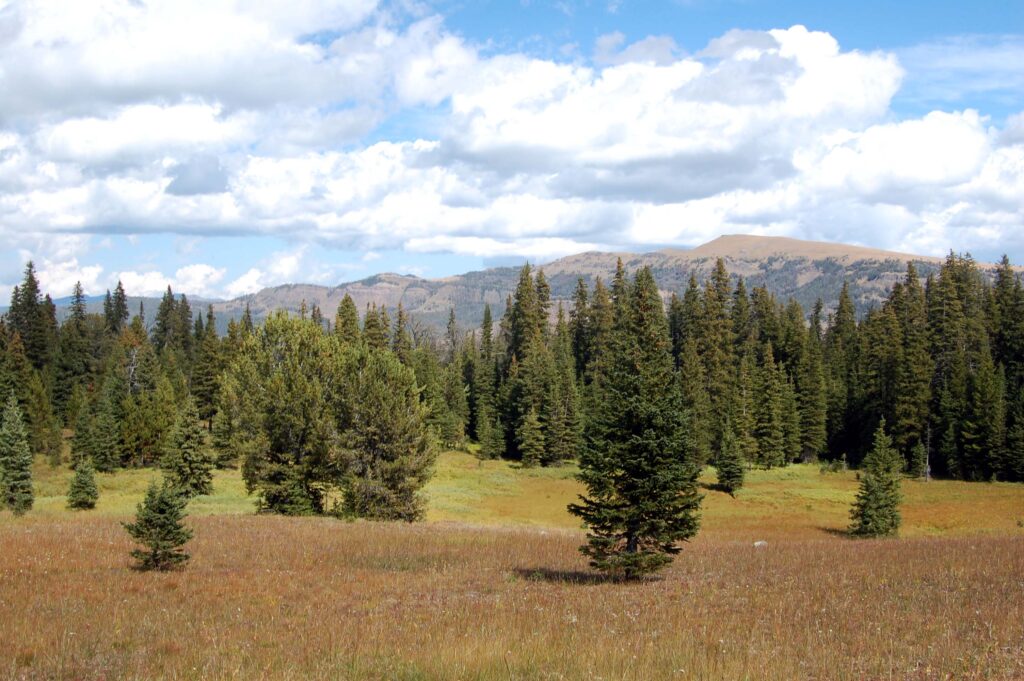
The intrinsic value of the Gallatins has not changed, but evidently the perception by some certainly has. We ask the public not to buy into this argument being propagated by the Gallatin Forest Partnership that there is no other alternative to their plan. In fact, there are more inspiring visions that can unite us in protecting the best that remains and making it part of our legacy.
The Gallatin Community Collaborative failed. The Gallatin Forest Partnership, in my opinion, has failed wildlife conservation too. It is time for another do-over, this time with priority given to preserving the thing that sets the Gallatins apart—not its trails or part-time thrills it gives to people; but its wildlife that call it home.
Protecting the Gallatins is an opportunity to show what we value about a Montana that otherwise seems to be slipping away. The question we must ask ourselves is this. Do we appreciate our living planet beyond our own existence? That is a “yes” or “no” question. If your answer is “yes,” then we must provide a place for that living planet to exist. We cannot be so arrogant to think our lifestyle and endless appetite for more does not or will not impede other lifeforms. We know better.
To US Senator Steve Daines and incoming Senator-elect Tim Sheehy, we wildlife advocates urge you to voice your support for protecting a world-class stretch of Montana on behalf of Montanans and the nation. For citizens, fight for wildlife’s place on a landscape that is dealing with soaring, undeniable human pressures. Say no to the Partnership’s self-serving idea, custom made for recreationists by recreationists. Advocate for something we have that few other states do but whose future is not secure. Be a voice for that.

